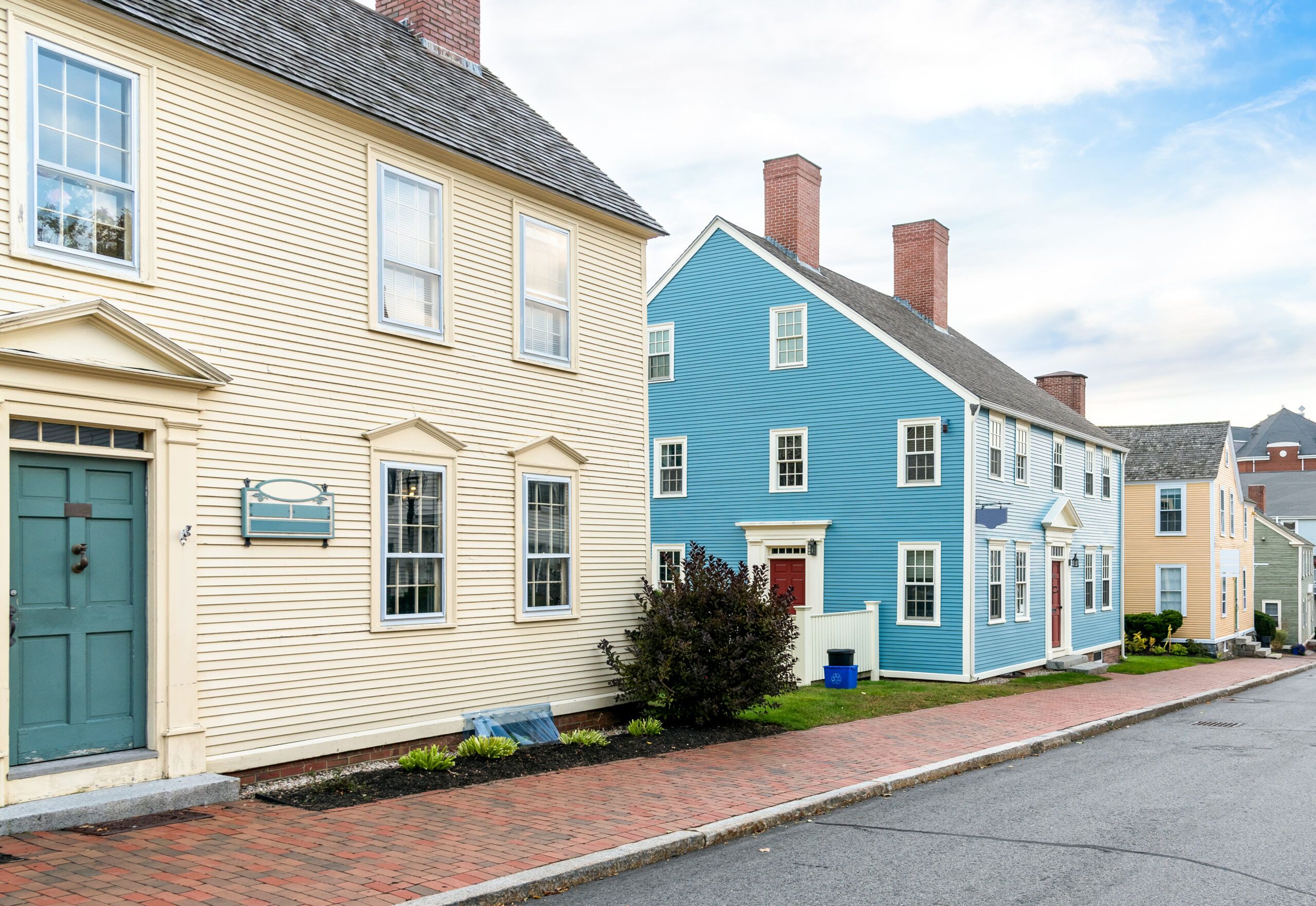How Do You Find Out the History of an Old House?
Tracing the history of an old house is like making your way through an overgrown garden maze. In most cases, unless you are a descendant of the original owners and have an attic full of memorabilia, finding out when your house was built, who lived within its walls, and what changes various homeowners wrought can be a challenging—but fascinating—journey. Anyone who undertakes it will need to be equal parts architectural historian, oral historian, research librarian and genealogist.
A Homeowner’s Story
On a street filled with ersatz 1960’s Colonials, the two-story white clapboard house with the black shutters exudes antique charm, especially when one notices the quaint sign hanging at the end of the driveway: Suttonfields, ca. 1734. The sign dates to 1983, after Gladys Schondorf, who owns the Somers, N.Y., house with her husband, Jack, did a deed trace on the property.
Working with the town historian, she learned that her 2.7 acres had been part of a farm established by one John Sutton in the early 1700s and that a structure existed on the land in the 1730s. Schondorf presumed that her house included part of that original homestead—but now, after more digging, she’s unsure if Mr. Sutton ever lived within its walls.
9 Ways Uncover a House History
1. Identify the Era the Structure is From
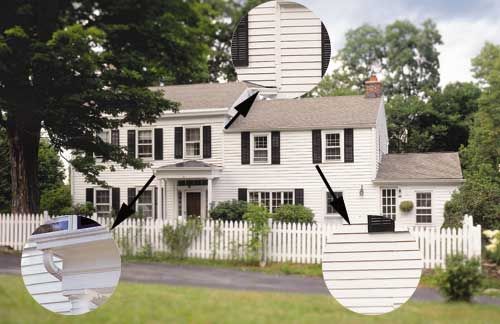
The first step in compiling a house history is to identify the era in which the structure was built. With the help of an architecture book or two, most home owners can discern a core style—even among a century or two of renovations and additions—by examining the silhouette of the house and its layout, as well as the style of the windows, doors, and other features.
A mansard roof, for example, may be of the Second Empire style of the late 19th-century, while a hip roof might indicate a Queen Anne house built a decade later. But keep in mind that while looking at visible features reveals a lot, there may be a hidden chapter to the story. Many a contractor has been surprised to uncover an old wall, a few stair steps, or some other vestige during a renovation. If you are not inclined to dismantle your house, a tour of the neighborhood to scope out similar homes can suggest the original blueprint lying within altered walls.
2. Invite Experts to Assess Your Home
Schondorf took her research several steps further and invited some local experts to assess her home. As they studied the exterior and interior of the Schondorf house, John Massengale, an architect and historian from nearby Bedford, N. Y., and David Gengo, a restoration contractor who owns Salem Preservation in Ridgefield, Conn., immediately noted the 19th-century Greek Revival elements of the house. There was, for instance, a column motif indoors and out, as well as a casing detail around the front door, interior doors, and mantels.
But just because Greek Revival houses were prevalent in the early to mid-19th century doesn’t necessarily mean that the Schondorf house was built then. The original house may have gone up earlier and received a stylistic facelift, or it may have been built later, after the style waned. “In the provinces,” says Massengale, “styles hung on longer.”
3. Pay Attention to The Construction
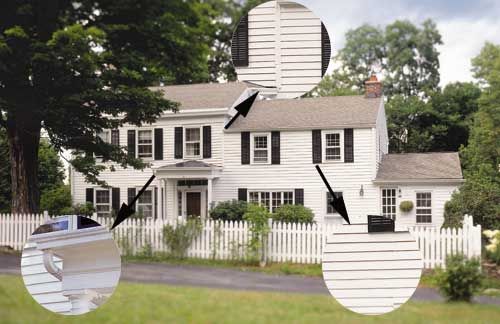
The date of a house’s style can be supported—or contradicted—by construction details, since the frame of a house is unlikely to have been altered since the time the house was built (except in parts damaged by fire or changed with an addition).
When Massengale and Gengo descended to the cellar of the Schondorf house, the consistent foundation under both the “old” and “new” parts told them the whole house was built at one time. A closer look at the floor joists, foundation, and timbers supported their conclusion.
Massengale and Gengo maintained that the milled boards used in the frame came into use too late for even the center part of the house, assumed by the Schondorfs to be the 18th-century core, to have been built then. Though the timbers are clearly hewn, the joists supporting the center section have the straight and parallel teeth marks typical of a 19th-century water-milled board. “If this was a true, untouched, mid-18th-century house,” says Gengo, “the floor joists would be completely made by hand.”
4. Examine the Finer Details
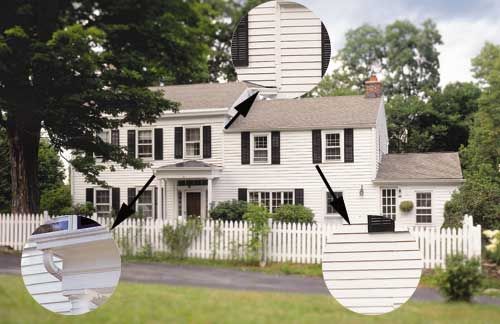
Other details that help rough-date a house include nails, paint colors, and molding and muntin profiles. Before the 20th century, all of these had styles particular to certain eras. (The manufacture of building materials became fairly standardized by the late 19th century.) The type of nails in the frame, for example—wrought, cut, or wire—direct the fastener-educated to a particular period.
Professionals can help date elements of a house by examining a cross section of a paint chip, says Brian Powell, an architectural conservator with Building Conservation Associates. If Powell finds that a room had 10 layers of paint, for example, but a door casing only had the last eight, he would then know that the casing probably appeared around the same time as the third layer of paint on the walls. Chemical qualities of that layer might link it to a period of manufacture.
5. Inspect the Hardware
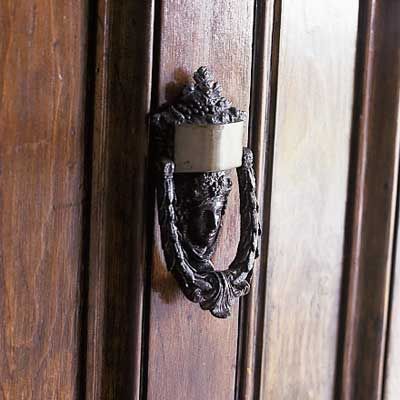
Hardware also tells a story—albeit a difficult one to decipher because sophisticated hinges and bolts were available from Europe at the same time that early local hardware remained relatively crude. But if a hinge design, for example, matches the estimated date of a door, and that hinge shows no sign of having been changed (paint irregularities and superfluous screw holes are big clues), then it may confirm the estimate.
On the other hand, if the hardware is from the days of mass production—from the Victorian era on—old catalogs, available in many university libraries or historical societies, become a great resource.
When all the available clues are taken into consideration, the possible construction date of a house ideally falls into a 10- or 20-year window: “That’s about as good as most of us can do,” says Gilmore. After looking over the Schondorf house, John Milnes Baker, a Katonah, N. Y., architect and the author of American House Styles: A Concise Guide, agreed that the authentic Greek Revival style meant a post-1820 construction. Noting the wood gutters built into the eaves—which didn’t show up till 1840 or later—and the materials used in the frame, Baker deduces that the house went up around 1850.
6. Review Official Records
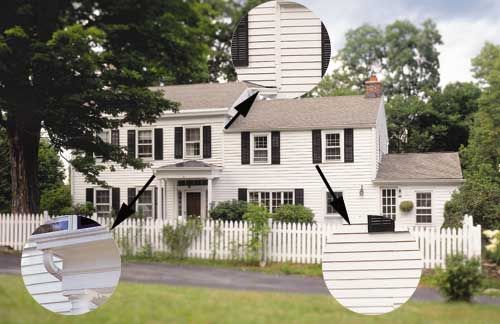
Official records should back up any guesstimate about construction dates and alterations, especially for a house built in the 1900s. “Around the turn of the century, owners had to start getting permits for alterations, for plumbing, that sort of thing,” says Gilmore.
Every state has a preservation officer who can guide a homeowner to the right resources: county archives, state preservation trusts, and most importantly, local city or town historical societies. The latter will have the best catalogs of municipal information, including maps, local newspapers, and the genealogical information that reveals fascinating details about the people who lived their lives in your home.
Trace the Deed
Florence Oliver, the town historian for Somers, did the deed trace for Gladys Schondorf in 1983, working backward from the current owners. The search started at the town’s deed office, then moved on to the Westchester County archives for the period before the town was incorporated. Oliver looked at transfers for the Schondorfs’ 2.7 acres, as well as the larger tracts of 92 acres and more that earlier owners held, and she even glanced at transfers for adjoining property to hunt for mention of the land in question.
She was able to trace the sale of the property through the previous 23 owners, as far back as the initial colonial landowner at the turn of the 18th century. The house itself is first mentioned specifically in a deed dated 1849, in which a man named George Van Kleek bought an 81-acre lot from his sister Theresa “with the provision that their mother, Sarah, could occupy and enjoy during her lifetime one kitchen, two bedrooms, one parlor, privilege in the garret and cellar in the dwelling house and the use of a quarter of an acre for a garden.” This listing describes half the rooms in the present house. If the Schondorfs’ home didn’t exist by 1849, it was about to be built.
Use Old Maps
George Van Kleek’s house is clearly visible on an 1851 map, the earliest one in the Somers Historical Society that shows property locations. Looking at maps in chronological order, a researcher can pinpoint the date a house first appears in a town survey. For homes built after 1866, Sanborn maps—named for the firm in Pelham, New York, that created them—give excellent descriptions of size, layout, and materials for houses in more densely populated areas (the maps were used by insurance companies). They are usually on file with historical societies or available through the Sanborn company, which still exists. “They tell you, for example, if the building was wood frame or brick, how many stories it had, where the window were placed—things that would help a policy be written,” explains Mary Beth D’Alonzo, a project archivist with the Georgia Historical Society.
Try City Directories and Newspapers
When starting your quest, D’Alonzo points out, don’t dive into old records looking for your own address. Street names, house numbers and lot designations frequently change over the years, so it’s a good idea to work backward from current records. To uncover the names of former owners or tenants, D’Alonzo also suggests checking old city directories, organized by address. Historical societies or libraries usually have them, and they are available through the present day. City directories exist even from the days before phones—as far back as the 1830s or earlier.
Newspapers also sometimes yield surprising information. “Look at indexes for the years you think your house may have been built, under headings such as ‘buildings’ or ‘architecture,'” says D’Alonzo. “Construction of the more prominent houses in the area may have warranted articles,” she says. “A lucky researcher may even find how many rooms were on the first floor, maybe even the wall paper.”
7. Reference Old Photographs
Old photographs provide an unambiguous source of evidence, documenting both small and large changes to the footprint of a house. When K.C. and Steve Chilton bought their 1866 farmhouse in Lovettsville, Virginia, from descendants of the original owners, they saw their house evolve in the background of a host of family portraits taken on the front stoop. Lacking such a gold mine, a researcher can plumb photo archives in local libraries and historical societies.
Lauren Glant was so delighted with the information she uncovered about her Brooklyn, N.Y., townhouse—including archaeological finds she dug up from the site of an old cistern in her backyard—that she started her own business doing house histories. “It’s easier to get info about the home—deeds, mortgages and so on,” she says, “than about the people, such as census lists,” which she peruses to learn personal details about tenants and owners. Glant recommends publicizing your curiosity, because neighbors and older community members will come out of the woodwork to tell you bits and pieces about your home’s history. Once you know an owner’s name, she suggests searching genealogical Internet sites for more information.
8. Dig Up Tax Property Records
Without a photograph, first-hand account, or actual mention of a house in town records, a town’s property tax records can help. “If the per-acre land assessment on a piece of property goes up in a given year, it’s a good indication that a house was either built or substantially improved at that time,” says Florence Oliver.
For example, a year-to-year study for the Schondorf property for the 1830s and 1840s showed that between 1848 and 1851 (the interim years are lost), the assessment jumped from $30 an acre to $45 an acre. Presumably this is when the Greek Revival house was built. But that’s not to say that there wasn’t a house on the property, perhaps in the same strategic hilltop location, before 1848. It just means that this particular house most likely dates to that time.
Gladys Schondorf isn’t entirely convinced her house doesn’t have more history to reveal. She imagines total renovations, and somewhere underneath all the plaster and facelifts, a rough little 1734 cottage. (After all, what did those previous landowners live in?) “The thrill of researching your house is that it conjures up so many romantic thoughts,” she says. But what if she finally concludes that the house was definitely built in 1848? “Well, then,” she says with a sigh, “I would have to repaint the sign.”
9. Peel Back the Paint
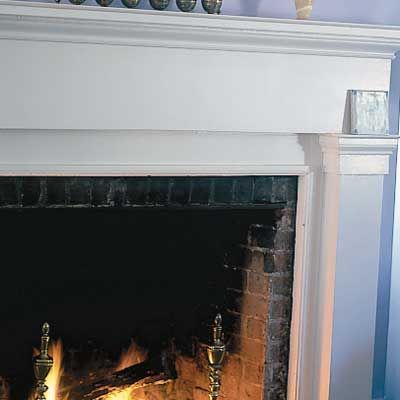
Home owners can use a cruder technique called cratering. Slice a small patch of paint away from the wood, then lightly sand around it. Layers of color will feather away from the center and gradually reveal the earliest coats.
A home owner who wishes to restore a house’s original paint colors—or who is simply curious about them—may want to consult an expert from a conservation firm. A tiny sample or plug from a wall is removed, cast in resin, and polished perpendicular to the layers.
An examination under high magnification and ultraviolet light will help distinguish between even “a million shades of white,” says Brian Powell of Building Conservation Associates in Boston, Massachusetts. “Different layers will reveal different amounts of fluorescence,” corresponding to materials used during various periods.
Because colors tend to fade over time, paint conservators look for drips and other thick areas that have a more protected core. Lacking a pristine sample, says Powell, “you have to use a curatorial eye and correct based on what you know of a paint’s properties.” Verdigris green—an expensive shade used on interiors in the 18th century—eventually turns a dull brown; prussian blue fades easily; and linseed oil, a common paint ingredient, darkens and yellows away from light, so that it could throw off a sample taken from behind a shutter. Once the right color is identified, the experts fingerprint it by measuring it on a chromometer. Then they match it to a paint chip from a modern-day manufacturer.
Where to Find It
Historic Consultants:
Building Conservation Associates
New England Office
Dedham, MA
781-329-4145
Historic Societies:
National Trust for Historic Preservation
Washington D.C.
202-588-6164
National Register of Historic Places
Washington D.C.
202-354-2213
Society for the Preservation of New England Antiquities Old House Resource Line
Waltham, MA
781-891-1985. ext. 229
Georgia Historical Society
Savannah, GA
912-651-2125
georgiahistory.com
Restoration Contractor:
David Gengo
Salem Preservation
Ridgefield, CT
203-431-9444
Restoration Carpenter:
Ted Ingraham
N. Ferrisburgh, VT
802-877-0043
joyner@together.net
Architectural Historians:
John Montague Massengale AIA Architects & Town Planners
Bedford, NY
914-234-7277
massengale.com
Maps:
The Sanborn Map Company Inc.
Colorado Springs, CO
877-368-9702
Further reading:
- American Shelter: An Illustrated Encyclopedia of the American Home, by Lester Walker, Overlook Press, 1981
- How Old is This House? by Hugh Howard, Farrar, Straus, and Giroux, 1989
- House Styles in America, by James C. Massey and Shirley Maxwell, Penguin Studio, 1996
- Old American House, by Henry Lionel Williams and Ottalie K. Williams, Bonanza Books, 1957
- A Field Guide to American Houses, by Virginia and Lee McAlester, Random House, 1984
Our thanks to:
Florence Oliver
Somers Historical Society
Somers, NY
